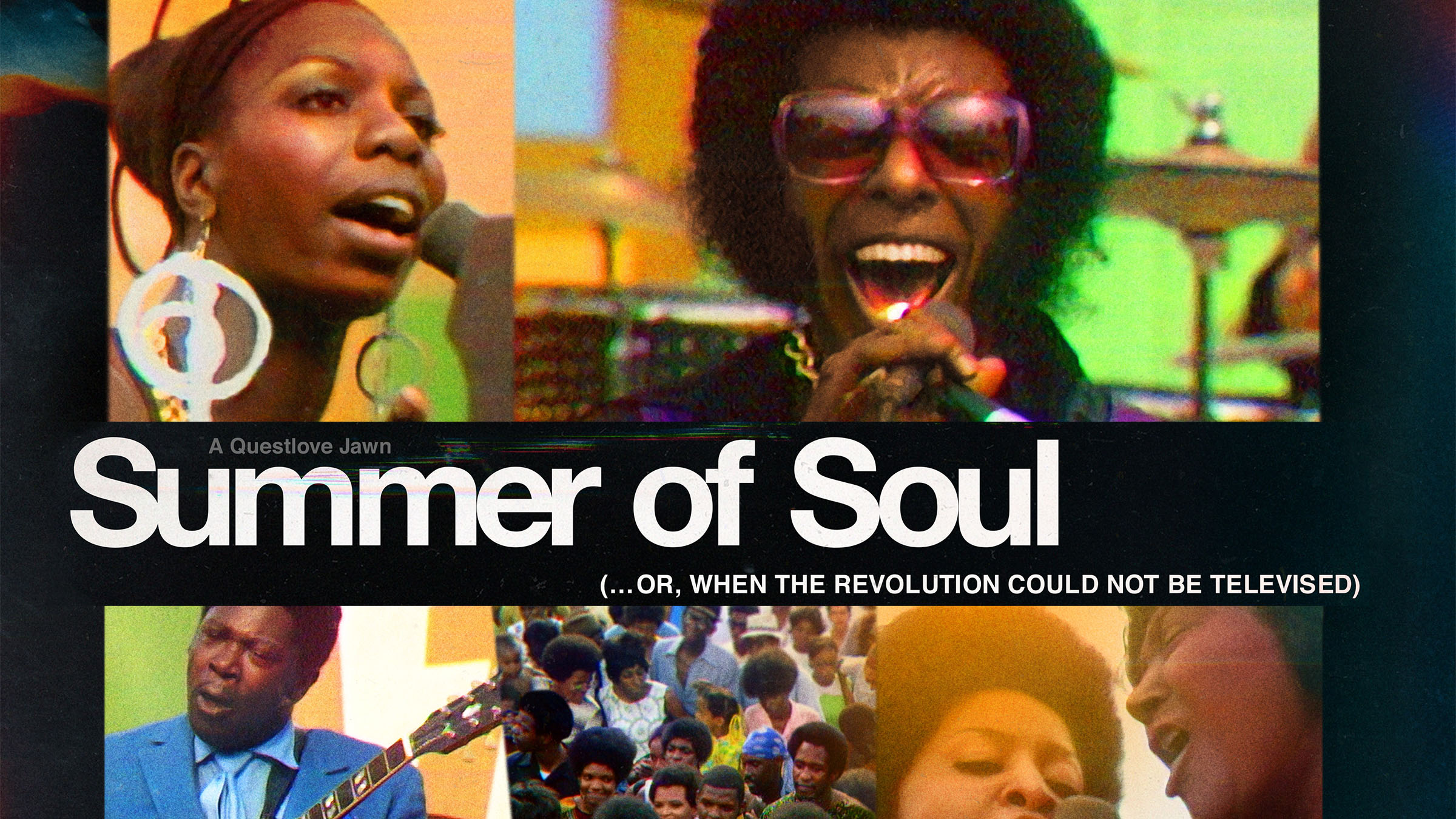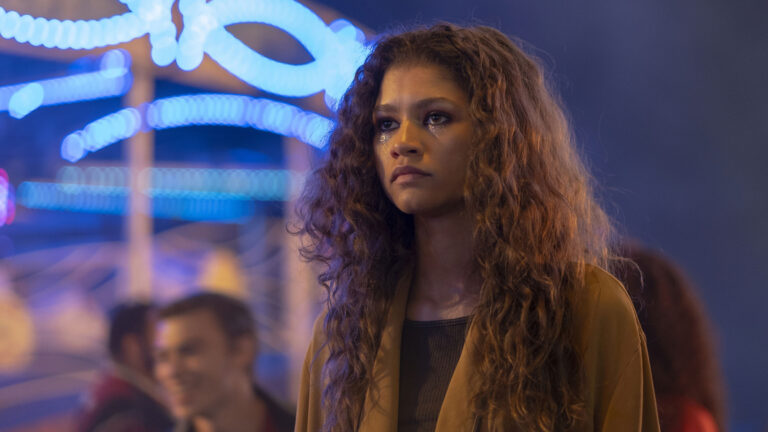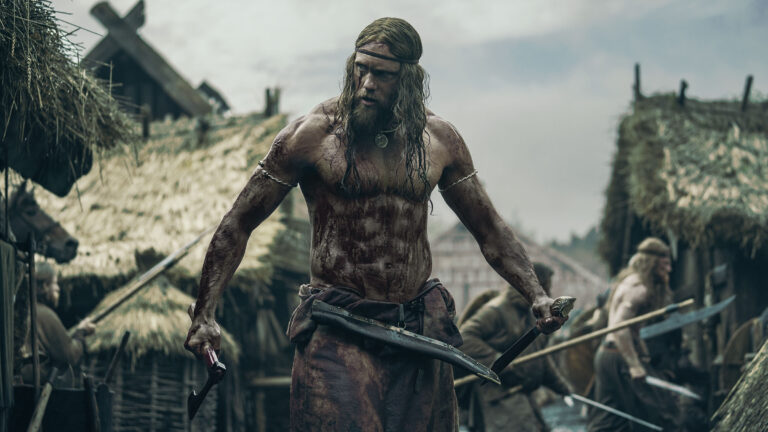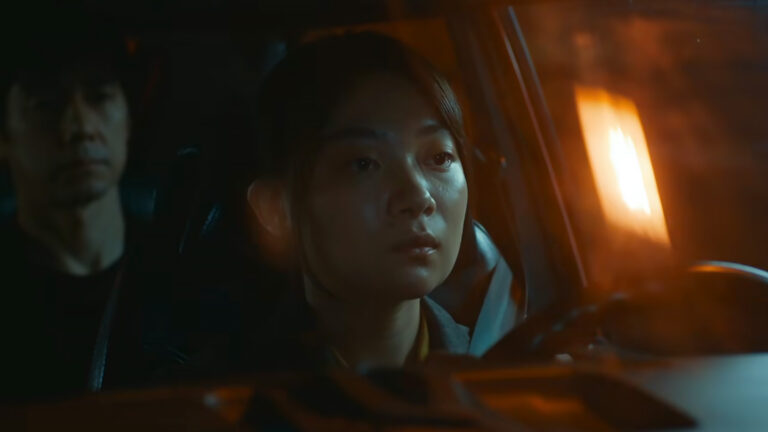On today’s Art of the Cut, we’re speaking with Joshua L. Pearson about cutting the Questlove documentary Summer of Soul about the so-called Harlem Woodstock.
Joshua has been nominated for three Emmy’s for his sound work on the documentary Under African Skies and for his sound work and picture editing on the nonfiction program What Happened, Miss Simone?
He was also nominated for an ACE Eddie for Best Edited Documentary for Keith Richards: Under the Influence. He also edited the Ron Howard documentary Made in America and has also cut scripted narrative like Tears of a King and Shrek the Musical. That’s quite the range.
Listen while you read…
HULLFISH: The choice of starting any documentary is critical, and I was really interested in the opening sounds and images that you chose to use to start this, which are behind-the-scenes audio. Then, there’s a question from the interviewer—which is pretty rare—that doesn’t even get answered. Talk to me about why the documentary was started like that.
PEARSON: Well, the beginning of the film went through a bunch of different changes. We knew that we wanted to start with the Stevie Wonder drum solo. Early on, I thought it might be cool to try to build some mystery around what was going on, where you get dropped into the middle of this giant crowd of people, you don’t know where you are, and all you’re hearing is the murmur of the crowd. I wanted there to be a drone. I love drones. But I also wanted it to be natural.
There’s no music in the film that doesn’t come from the concert itself. There was no score. So instead I thought, “Oh, how about a propeller airplane drone on a summer day?” You’re in the park and you hear that drone of the airplane flying overhead. So, I added that and Questlove and the producer, Joseph Patel, really loved that, but then a couple of months later, it just wasn’t exciting enough.
I believe it was actually Joseph Patel’s idea working with Questlove to actually try to toss in some of the nat sound from the announcer, all those classic things you hear in concert like, “We’ve got your wallet over here,” “Your mother’s waiting for you,” etc… There were all these great announcements from the stage. I added in a couple of little tape glitches to make it seem like you’re watching a memory.
Working on this film made me realize that originally everybody wanted it to be immersive like Woodstock is immersive. The problem is there’s a huge difference between the way Woodstock was shot and the way this Harlem cultural festival was shot, which is that Woodstock had 15 camera people wandering around the crowd with 16mm cameras capturing all the stuff that’s going on in addition to the cameras that were on the stage on the artists performing. Whereas, this film, they didn’t have that. As you can hear in the film from Hal Tulchin, the guy who shot it, it was very low budget. It was almost on spec. So, all we had were the five cameras pointed at the stage.
There’s a huge difference between the way Woodstock was shot and the way this Harlem cultural festival was shot.
There’s nothing really that immersive in a Woodstock-y way about it. So, instead of trying to lean into that too hard, I realized that this is also a film about an artifact. That’s a big part of this film of course, is that you’re looking at this artifact that’s been buried in some guy’s basement for 50 years.
Other directors did try to make this film in the last 15 years or so. It had surfaced here and there. There are little clips of it on YouTube, but in treating it more like a combination of an artifact and trying to make it feel immersive we added a little bit of the tape glitches in the beginning as they’re trying to get going, but somehow it also feels immersive, which is cool.
Then, the decision to start it with Musa Jackson, who’s the interview subject who was a little boy at the time, came pretty late in the game where we really wanted to emphasize the framing and presentation of this film as an artifact. So, I realized it was a perfect way to do that because by then we already had him ending the film when goes on that great riff with Questlove saying, “Thank you. Now I know I’m not crazy.” Because when we showed these people the footage, it truly was the first time they’d seen this stuff in 50 years. It really was very emotional for a lot of people, artists and attendees alike.
HULLFISH: The opening of this film sets up that the interviewees are watching footage. You realize that these people are looking at themselves.
That all just got a little too complicated, and other films do that.
PEARSON: Yeah, and I’m glad it comes across because we were thinking about different ways of representing people watching themselves. We thought, “Do we get a projector and project behind them what they’re looking at?” That all just got a little too complicated, and other films do that. There’s another music doc where you see people sitting in front of this giant projection screen and there’s a camera behind them and also cameras on them, but in this case, we just went with simple. You can see the television light on their face, and so you get that they’re looking at the monitor.
In that case, you actually hear Questlove’s voice again. We chose to use Questlove’s voice to establish Questlove at the top of the film. He did not want to be a character in the film or be in any way part of the body of the film, but he was into this idea of just hearing his voice a couple of times. Actually, I think you only hear it at the very beginning and the very end. So, you hear him saying, “Let’s bring in a monitor.”
HULLFISH: I really liked the way you were talking about making the decision that you couldn’t make it immersive, but there’s a great moment early on where it’s just the crowd noise without music.
PEARSON: Again, that was actually the one big attempt to make it feel immersive. It just seemed like the right spot for it. It’s the same guy, Musa Jackson. He just did this great little riff about what it was like there that day, the smells, the sights, and the food. He goes on this great little riff, and I just felt like that was the perfect opportunity to put on display the best crowd shots.
It’s not like Woodstock. There’s no handheld camera in the crowd, unfortunately. It’s only these cameras from the stage that are pointing out into the crowd. They’ve got powerful zoom lenses, so they’re able to get in close on people’s faces. Also, of course there were these great photographs that were taken. That was the closest we could get to immersive footage. The photographer was in and among the crowd.
Then, because it’s Musa telling the story about the crowd, I thought, “That’s a perfect way to segue into The 5th Dimension performance, which is the great story where he’s got a crush on Marilyn McCoo. So, we ramp up the sound of the band starting to play and it just makes for a nice moment.
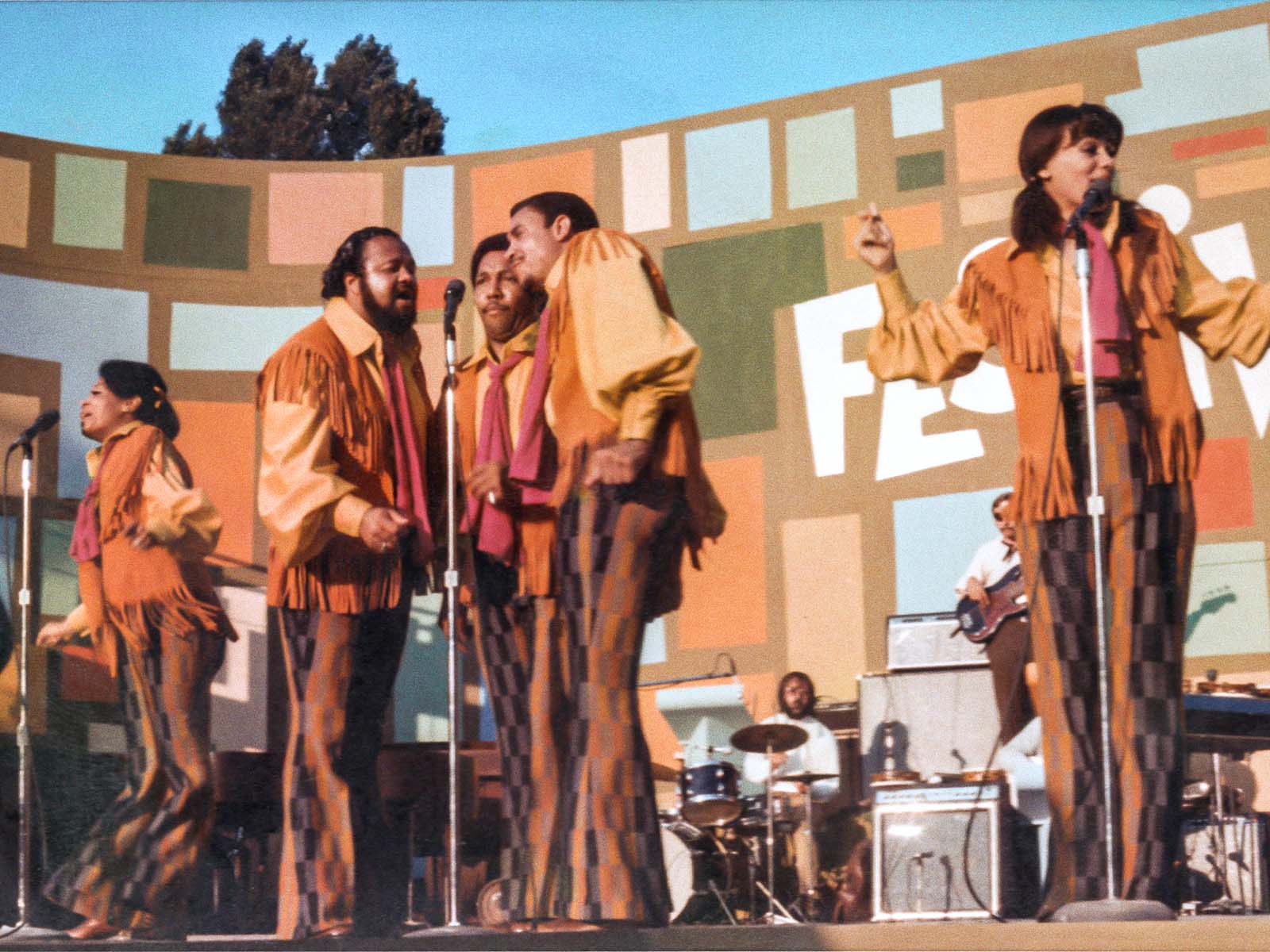
HULLFISH: I felt like there was some handheld stuff. Was there film footage from other crews?
PEARSON: We had an archivist working on the team, Elizabeth McGlynn. I’ve worked with her on a few different things and she goes very, very deep looking for archival footage.
Shockingly—or not—the only other coverage that we found of the concert, which is midway through the film, is the Apollo landing moment. It was the only other news coverage of the concert, literally that moment where the astronauts land on the moon. Walter Cronkite, 30 seconds later comes back and he actually does a throw to the reporter in the field standing there in the middle of the crowd. That’s the guy who then asked the people, “What do you think of the moon landing?” and they all say, “Well, it’s cool, but it doesn’t do anything to help us.”
Weirdly, that was the only other footage we’ve ever found of this concert. When they put out a call to try to find people who had been there, of course they were asking if anyone had any footage or had a 16mm camera with them, but nobody came up. We couldn’t find anybody who had footage.
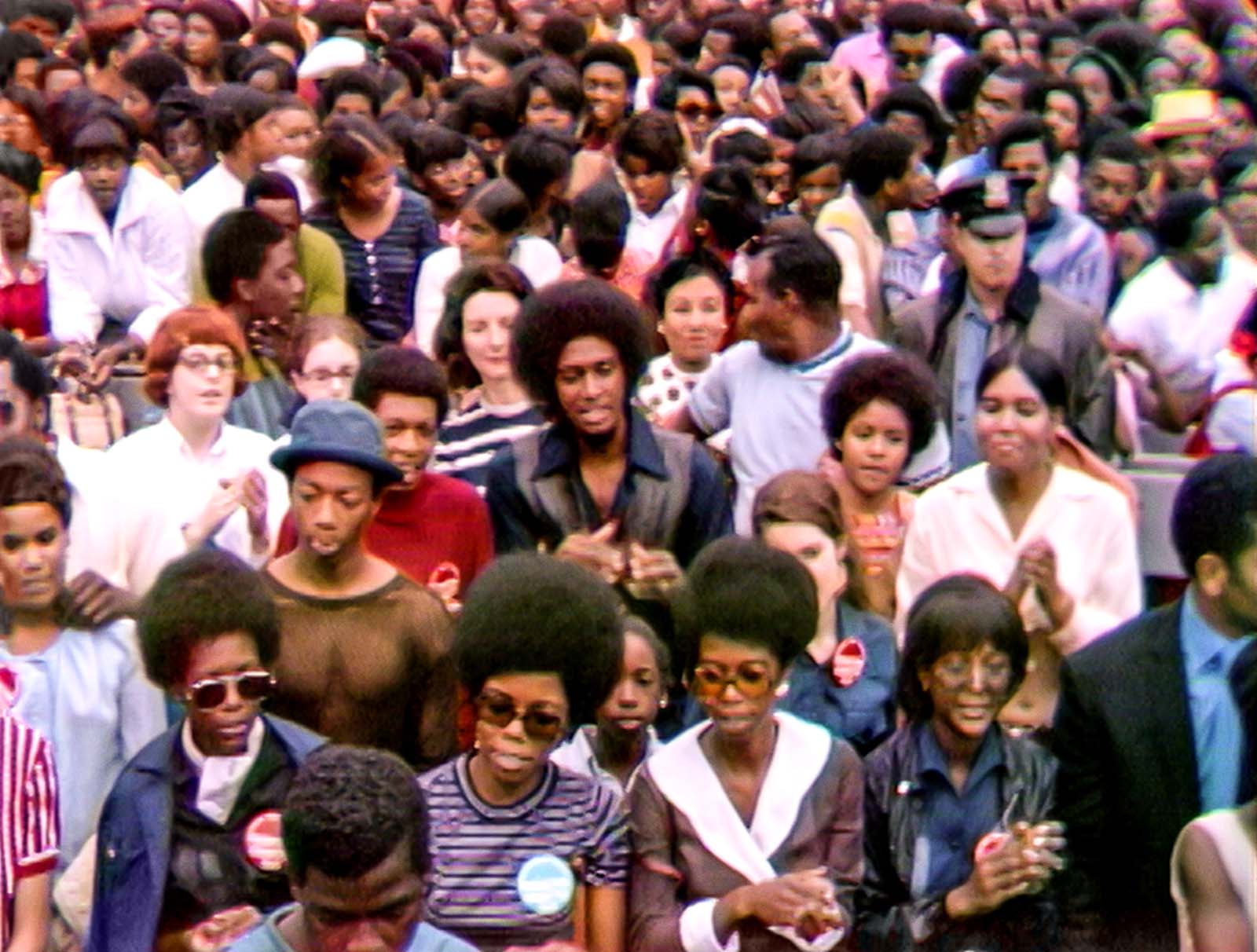
HULLFISH: In that opening Stevie Wonder performance, there are edits that I felt were live edits. You could tell it was probably a guy pushing a button in a truck, but then there were some others that felt more cinematic where I felt like the editor’s hand was there saying, “No, we’re not going to go with the line cut. I’m going to put something in here.”
PEARSON: Well, I did have to do a little bit of cheating here and there because we actually had no choice but to go with the line cut. I’m assuming due to the low budget that Hal Tulchin had, there were no ISOs. We only found two ISOs. That was the opening day, and it was a side angle camera of The 5th Dimension performing and it was on them the whole time, but they were also on the crowd a lot as well. That was the only ISO we found.
That gives me a pool of footage that I could potentially pull from, sync it up, and cheat it in.
So, when there are performers performing, I would cheat shots from other performances by that artist. For artists that performed six or seven songs, that gives me a pool of footage that I could potentially pull from, sync it up, and cheat it in because we’re only doing one of their songs in the film. So, I did that for the opening of the Gladys Knight & The Pips because all we had to work with was line cut, and when they start the song “I Heard It Through the Grapevine,” obviously they were having a problem because there’s only one long wide shot of the whole band and it’s wobbling up and down. It’s just a terrible shot. So, I went in and found reverse shots of the band performing and the Pips dancing, and I cheated those in because you can’t see any lips moving in the reverse shots.
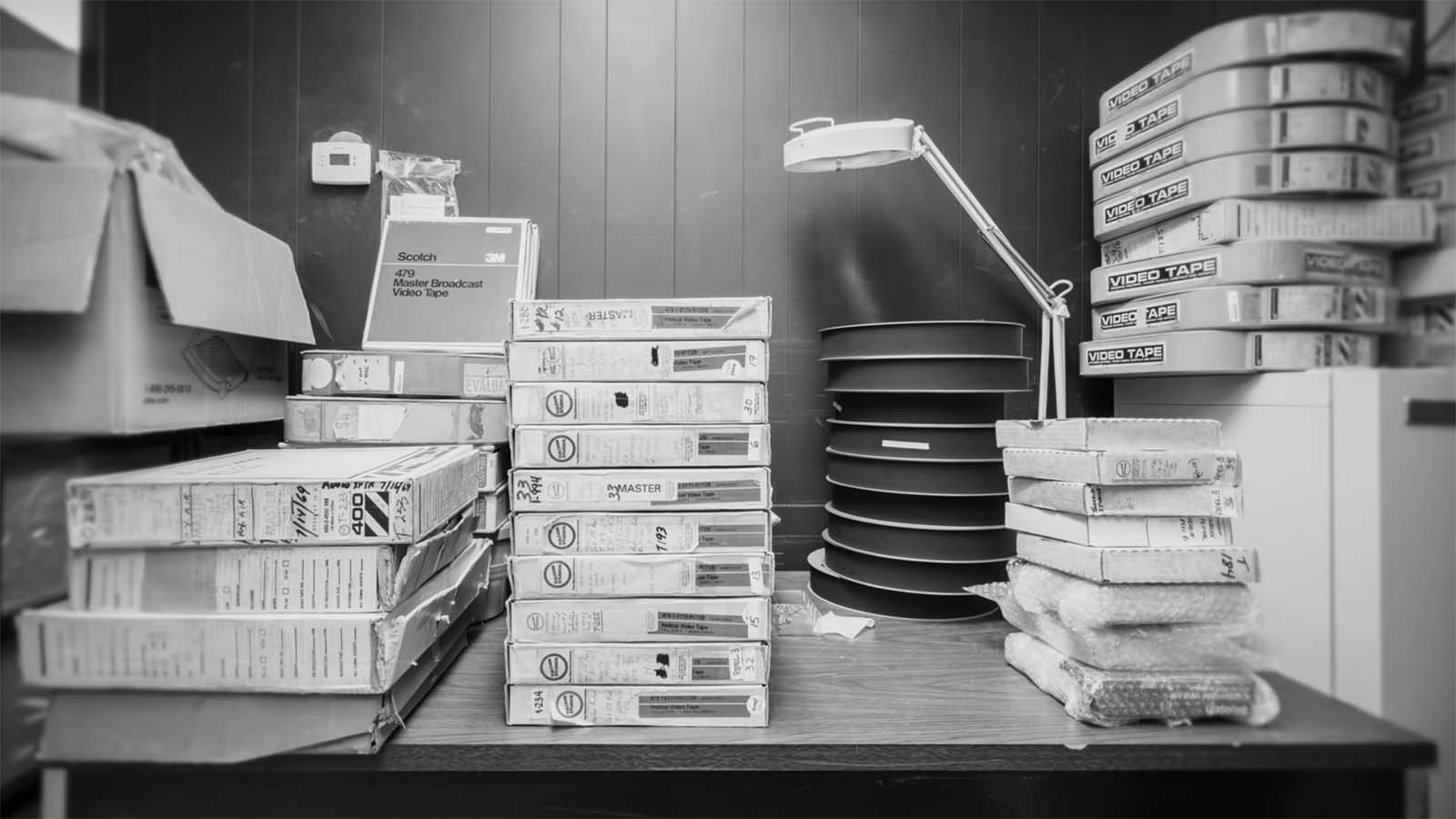
HULLFISH: Tell me a little bit about that opening montage over Stevie playing the drums and how that was constructed.
PEARSON: The film opens fairly abstractly. You’re dropped into this crowd, there’s tape glitches, and you hear announcements, but suddenly Stevie Wonder is performing and it is amazing to just watch him perform, but we just felt like we needed to drop a little information in there to help the audience begin to understand what’s going on. We’re announcing our themes up there as well. The theme of change for black culture, black fashion, and black music. So, we just wanted to drop those little nuggets into this montage. Also, it lends itself nicely to a montage.
HULLFISH: Was that the Harlem montage or was that later?
PEARSON: The Harlem montage is a little bit later. First, we set up the theme of the film, the broad strokes, and then when we landed in Harlem I thought, “How can you not do a Harlem montage? We gotta do a little Harlem flavor. Give props to Harlem.”
HULLFISH: There’s a nice graphic treatment on the first interviewee. Do you remember how that evolved?
They would literally paint a big white border around it and then re-photograph it, which is really strange.
PEARSON: That’s a very interesting little story. On some of the stills, we decided to put a big white border around the figure itself because we found a photograph of Charlayne Hunter-Gault, who’s the great New York Times journalist who then went on to be on NewsHour and is in the film. We found an archival photo of her in ’69 when she was working at The Times, and it had this bizarre big, fat, white border around her figure, but then you could see the rest of the background. She’s sitting in a newsroom, there were other people, and somebody told us that’s how they would cut people out if they wanted to put their image on something else. They would literally paint a big white border around it and then re-photograph it, which is really strange. We just liked how that looked, so we tried to be true to the times.
HULLFISH: Talk to me a little bit about the order of the music because it seemed to tell a story. I’m assuming, as you pointed out, you only took one song out of six or seven that a band would play, but the songs were chosen in an order.
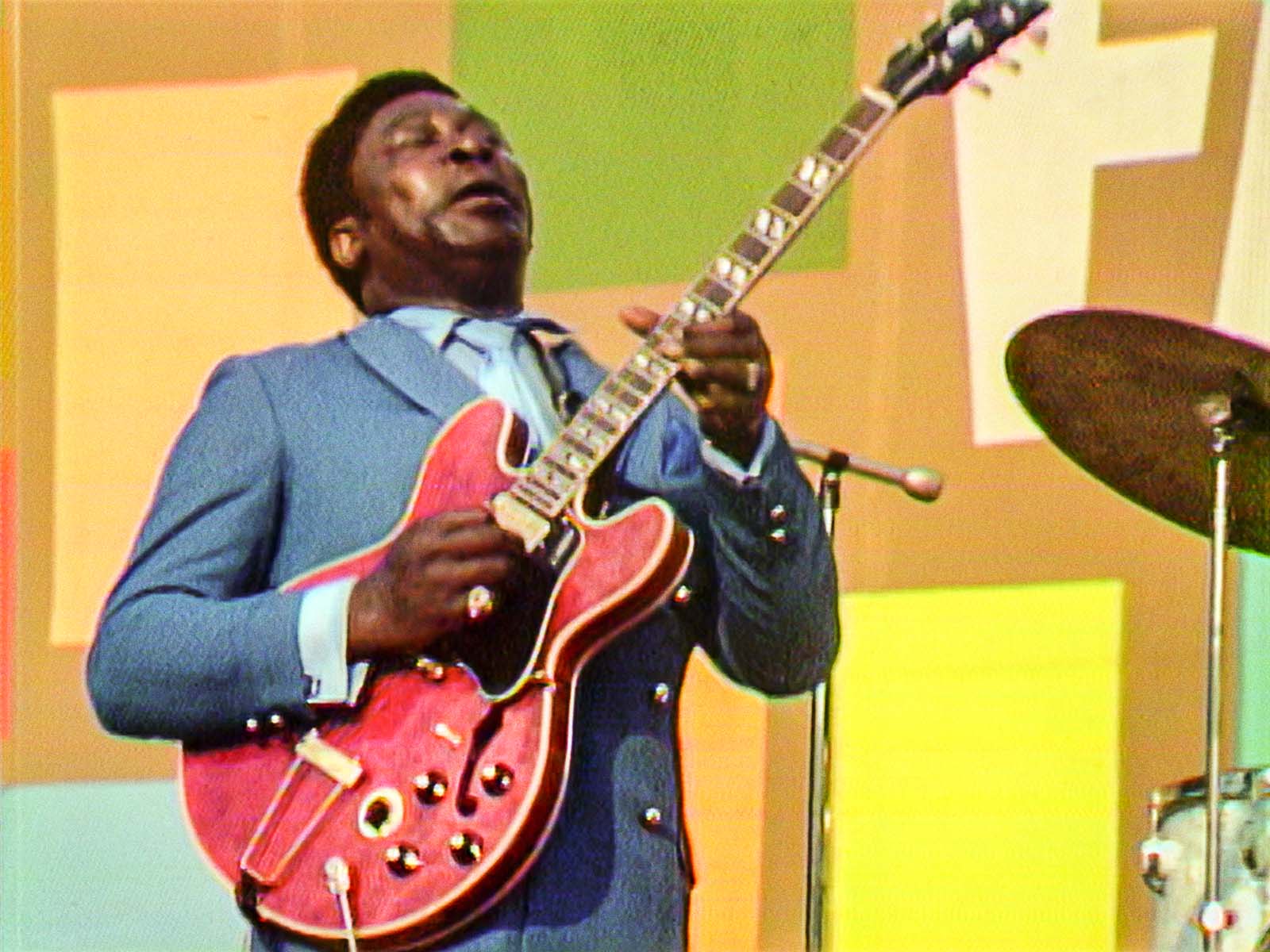
PEARSON: Absolutely. We wanted to have the arc of this movie be the change that occurred that year. 1969 was this really intense pivot point for black culture, black music and black fashion. It was all represented at this festival. So, yes, we decided to have the music start out as a bit of a grab bag. You go from Stevie on the drums to The Chambers Brothers doing very late sixties funk to B.B. King doing the old traditional blues.
That actually almost represented how the first concert actually was. The six weekends were actually broken up by theme. There was a gospel weekend, a jazz weekend, a Motown weekend. We didn’t want to replicate the actual real timeline in the film, and we wanted to have some flexibility. So, in the film, we represent that and it goes to The 5th Dimension. Then, there’s that great natural segue to the Edwin Hawkins Singers, that huge gospel group all dressed in lime green. That actually happened on day one.
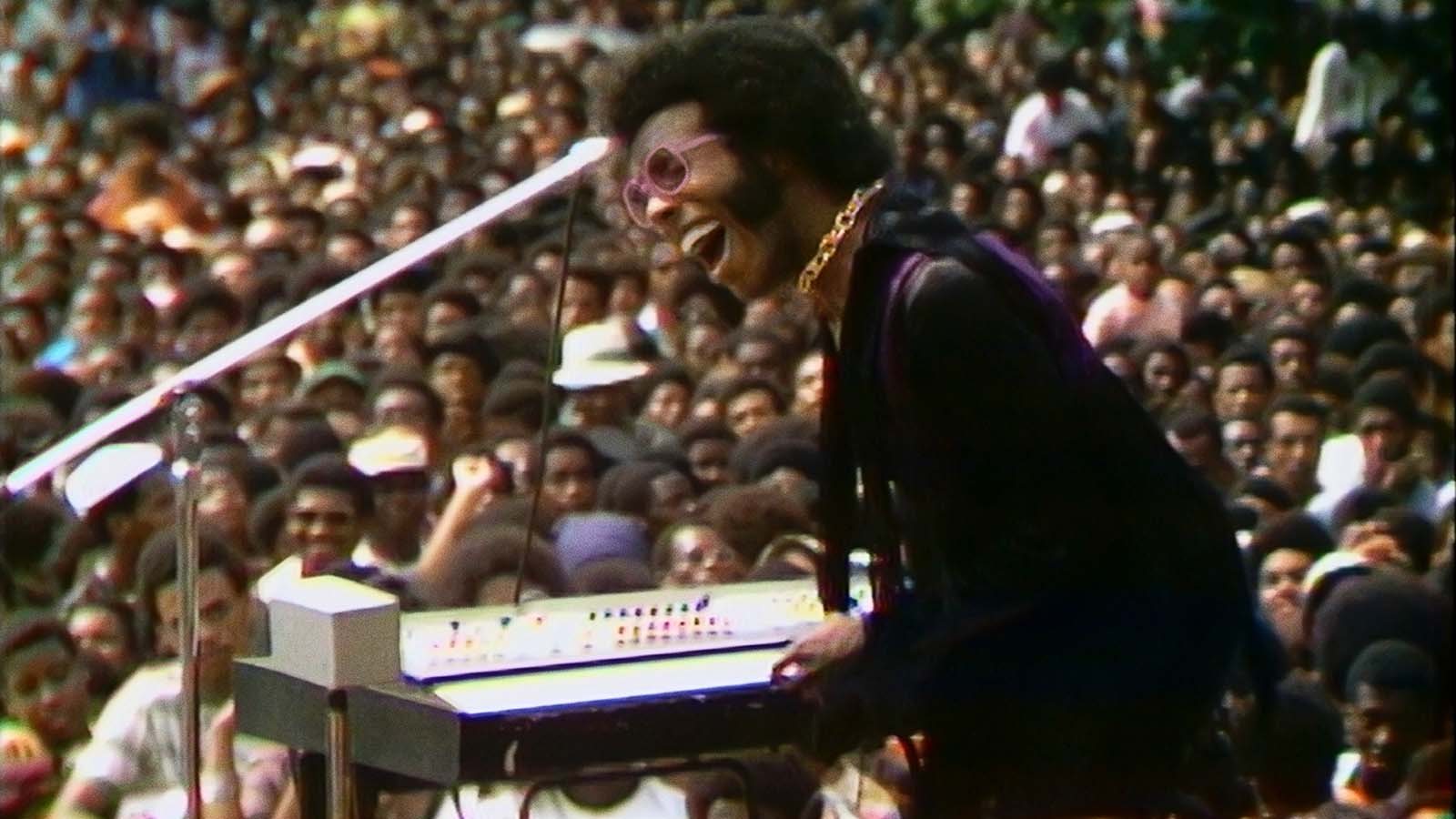
We wanted to do a kind of grab bag broad spectrum of the music, and so that’s what we did. Once we hit gospel, it was like the classic transition of, “Let’s go from the old stuff to the new stuff.” We’re going to start with the roots, which is gospel and B.B. King blues, and then that ends up with The Staple Singers. It starts off with The Staple Singers who have that really primal sound that really just sounds old and new all at once. They were just amazing.
Then, we go up all the way from gospel to Motown, progressing through time, and then we get to Sly and the Family Stone, which represents the future of black music. There’s a little detour into Latin music because Harlem is not just about African-American population. There’s a huge Latin population there too, and the music was influencing black music. Black music was influencing Latin music.
There’s a little detour into Latin music because Harlem is not just about African-American population.
Then, from there we jet off into the activist final third of the film, which is represented by Nina Simone, of course, who was doing not the old jazz standards that she used to do but doing her original compositions. She only started doing original compositions in the late sixties before that she was pretty much just doing standards and covers.
So, we definitely wanted to draw that line through the history of music. There’s actually a great moment where Tony Lawrence, the MC, has a great line at the end of the gospel section where he says, “All right, well we got a lot more for you here folks. I mean what you just saw was only the first 15 minutes of black music,” and it was perfect. It was exactly what we needed him to say.
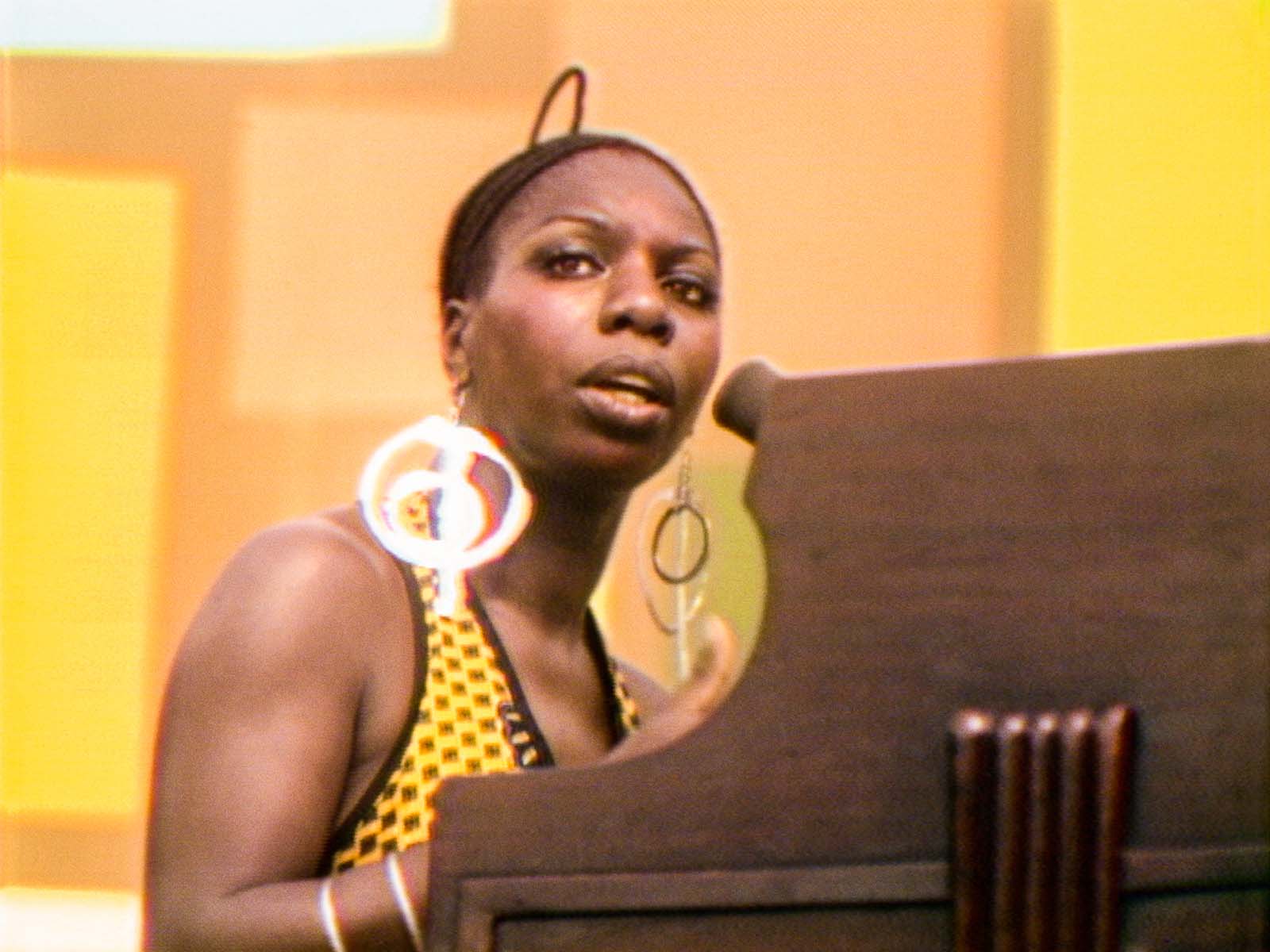
HULLFISH: Talk to me about determining when to come in and out of performances into the more documentary elements like the footage of the Harlem arts scene during The Chambers Brothers Harlem song.
PEARSON: It’s always a tough thing as you know. You’ve edited music films, I’ve edited concert films and music films, and it’s always very hard to break away from the song. You’ve always got the audience and you’re thinking about what they want. You’ve got a broad range of opinions. Some people wish that we’d let those songs play longer, but other people love the documentary content. So, it’s a tricky, delicate balance.
At what point are we going to lean over and start whispering in the audience’s ear?
For this particular film, I did stumble upon this funny rule of thumb, where I felt like if I’m at a concert with some friends and one of my favorite bands comes up, at a certain point I’m going to lean over and say something to my friend about the band like, “Oh my God, aren’t these guys amazing! I saw them last year.” So, I used that. I thought, “At what point are we going to lean over and start whispering in the audience’s ear?”
HULLFISH: I love that. That is the greatest rule of thumb because it’s totally true. At one point you say, “Check out the elephant flare pants.”
PEARSON: Exactly. “Oh my God, look at the drummer!”
HULLFISH: That’s a great answer.
PEARSON: There’s also more musical reasons, of course. There’s an intro, then there’s going to be a couple of bars of verse, then a couple bars of the chorus, and then it goes back to a couple of bars of verse, maybe one more chorus. It depends on the song. If a song has a lot of sections like the Gladys Knight & The Pips song, it seemed to have a lot of sections that I wanted to represent. There’s a lot of complex editing in there because it was a long version of that song, about five and a half minutes, and we crunched it down to a minute and a half or two.
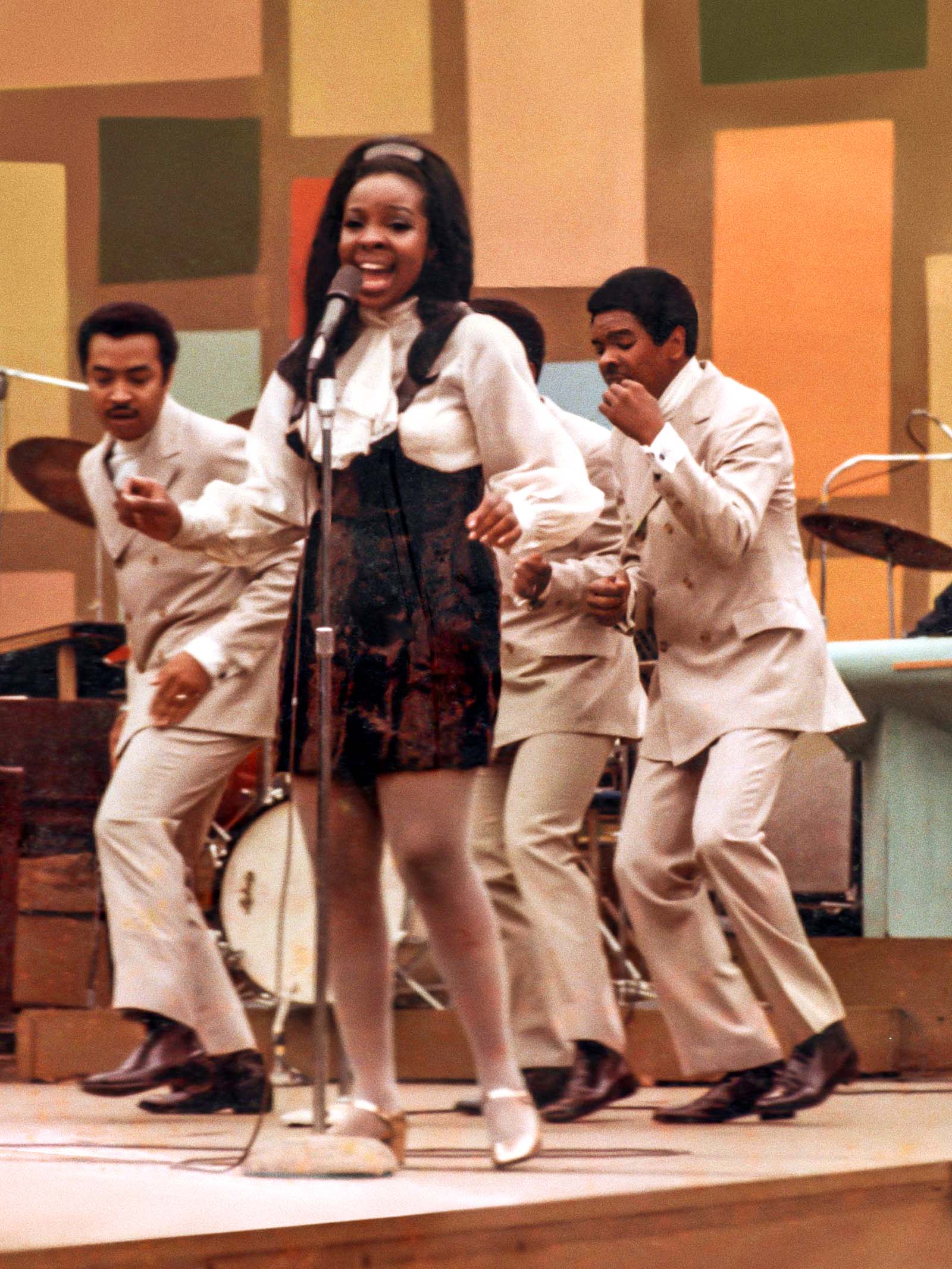
HULLFISH: You have always got to be cognizant of the form of the song.
PEARSON: Then, in other songs like the first song that we use by Sly and the Family Stone, there’s three distinct sections that they just repeat over and over again three or four times. So, on that I felt like I had license to say, “We’re done with these three sections in the first 45 seconds. Now, it’s time to lean over to the audience and start talking to them.” That’s how I figured that out.
Some tracks were really just used as score. There’s a great little scene about how fashion was changing. It’s a very dialogue heavy scene because it’s all talk about fashion. I just chose to use a jazz track because there’s no lyrics that are going to get in the way, and it also conveniently was Mongo Santamaria’s version of the Herbie Hancock song, “Watermelon Man.” So, there’s very little of that song in there.It’s a great song, but unless you’re a huge jazz fan, it gets a little repetitive after a while.
It seemed to be the perfect song to put under a big chunk of dialogue and then let the end play out. That’s when Lynn Miranda comes in and says, “That was Herbie Hancock’s ‘Watermelon Man.’”
HULLFISH: Talk to me about when to show interviewees on camera. I worked for Oprah for a while and we had very strict rules about talking heads.
PEARSON: Oh, interesting. That’s funny, the job I went to after finishing the film was for Oprah. I worked on The Me You Can’t See, that mental health show that she did with Prince Harry, or formerly known as Prince Harry. I’ve done a bunch of stuff for OWN [Oprah Winfrey Network], but there was no hard and fast rule. It’s more of just what feels right.
We didn’t want to show people, so you just try to establish them at some point, and then they can be off-camera for a while, unless they’re making incredible facial expressions.
HULLFISH: Right, or maybe displaying emotion. One of the few places that I can remember where you stayed on the interviewee was—and I can’t remember who the woman was, she was with another guy though…
PEARSON: Oh that’s the incredible interview we got with Marilyn McCoo and Billy Davis Jr. from The 5th Dimension.
HULLFISH: Right, so you’re on them occasionally.
PEARSON: Yes because they were just adorable. How could they not be on camera? I mean, they were just such a joy. Just looking at them brings you joy.
HULLFISH: Exactly.
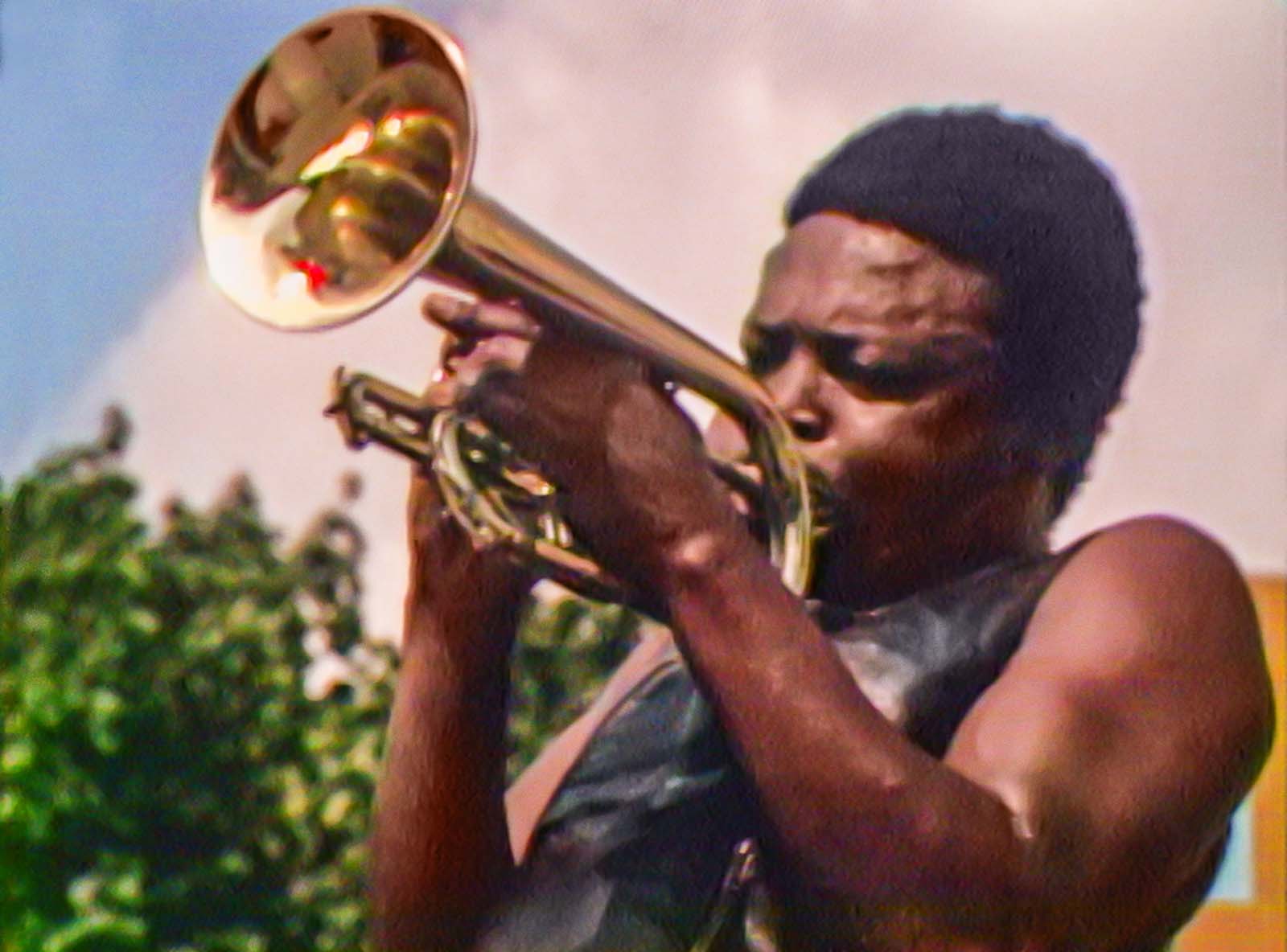
PEARSON: That was just a perfect storm of the right elements. When they’re watching themselves perform their performance is amazing, but again, it gets a little repetitive so we cut away to them and then they get revealed and they’re just so beautiful now. They’re just as beautiful as they were back then. They’re a married couple and they actually got married that year in 1969. So, they’ve been married since ’69 and they still perform. They’d been out there as Marilyn McCoo and Billy Davis Jr. for a long, long time.
HULLFISH: They were emotional about seeing themselves too.
PEARSON: Yes, absolutely. They are kind of an odd group in that they are very pop and they have a very clean, shiny pop-y sound for a lot of their stuff. Some less so.
How do you color a sound?
HULLFISH: They were sort of saying, “We’re a white band.”
PEARSON: Yeah, they were saying that they’d been accused of being too white, that they weren’t being black enough. That was something that bothered them for their whole career. So, it was just wonderful to have them tell that story. I love the soundbite she gave us which was, “How do you color a sound?”
HULLFISH: I remember that bite.
PEARSON: I almost thought that should be the title of the film.
HULLFISH: Was there any discussion of trying to get rid of some of those long video dissolves? As I watched the film more, I realized that there was just no way you could. I mean, back in the sixties, those guys loved the vision mixer. They were doing dissolves that took four seconds.
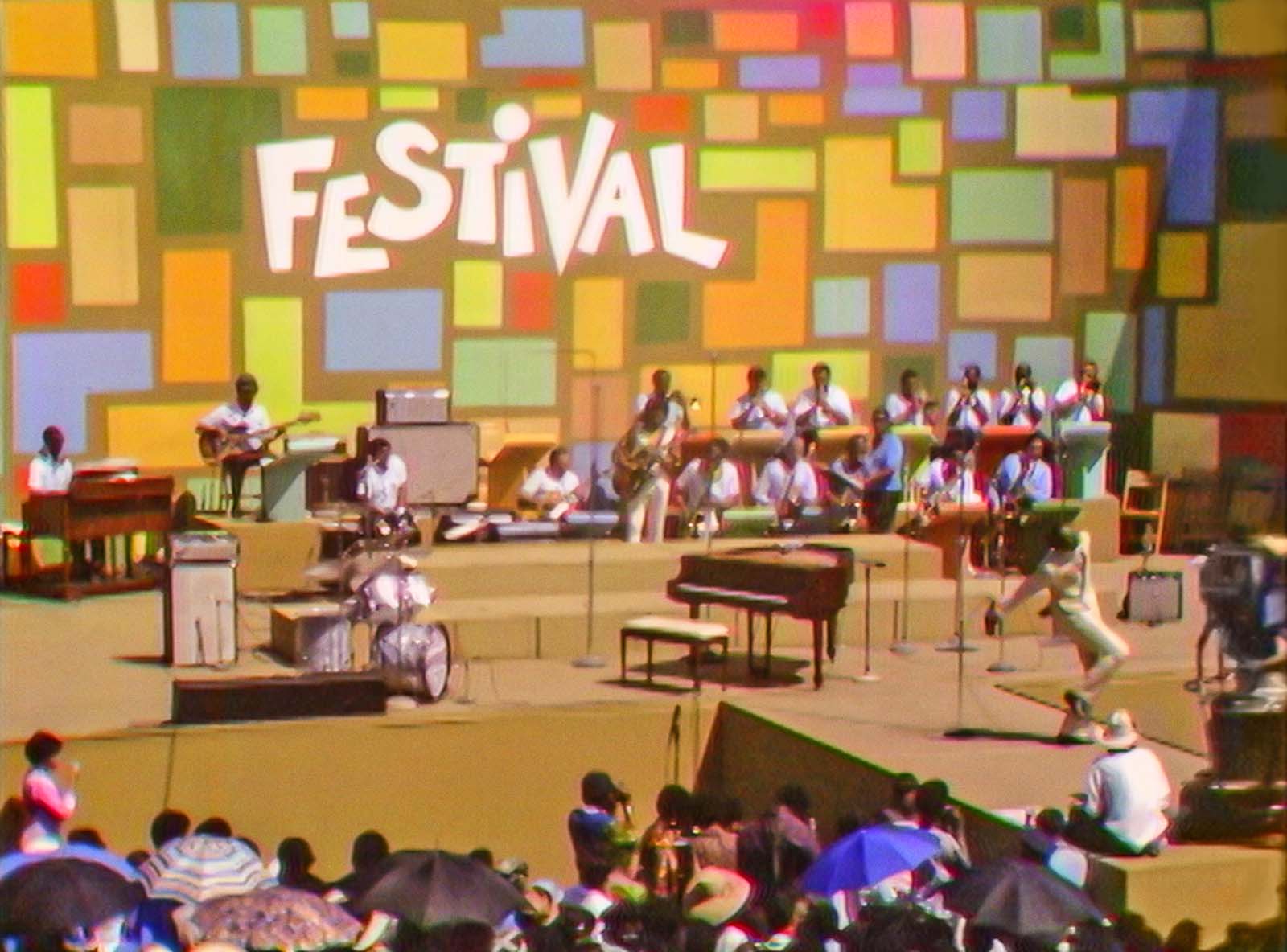
PEARSON: Totally. Again, we had no choice because there were no ISOs. So, I do a lot of work for Radical Media and there’s definitely a bit of a rule there for many years that was: no cross dissolves. They’re too old fashioned or too sixties. They’re too easy.
So, at the beginning of the film, various producers asked me, “We’re going to be able to get rid of those cross dissolves, right?” and I’d say, “Yeah, yeah. Don’t worry about it. It’s going to be fine.” But in the end, we couldn’t really. I cheated a lot of stuff, and of course cheated in crowd shots all over the place to try to break up some of the cross dissolves, but there are a lot of instances where we had no choice, and it’s up to personal taste. Some people like it, some people don’t.
I think somebody said to me, “I love that part of Nina Simone where the guitar player is superimposed over her face. So cool. Did you do that?” I said, “Nope. I had no choice.” That was a particularly egregious section of cross dissolving, that first Nina Simone song, “Backlash Blues.” I feel like the guy must’ve put the lever at 50% and walked away for a cigarette break or something. He really thought he was making art, but we couldn’t do anything about it. We didn’t have any ISOs.
HULLFISH: That’s so interesting.
PEARSON: So, I like to say we’re bringing cross dissolves back. We’re going to make America love cross dissolves.
HULLFISH: All right. I’m waiting for it. It doesn’t sound like Radical Media is going to let you do that.
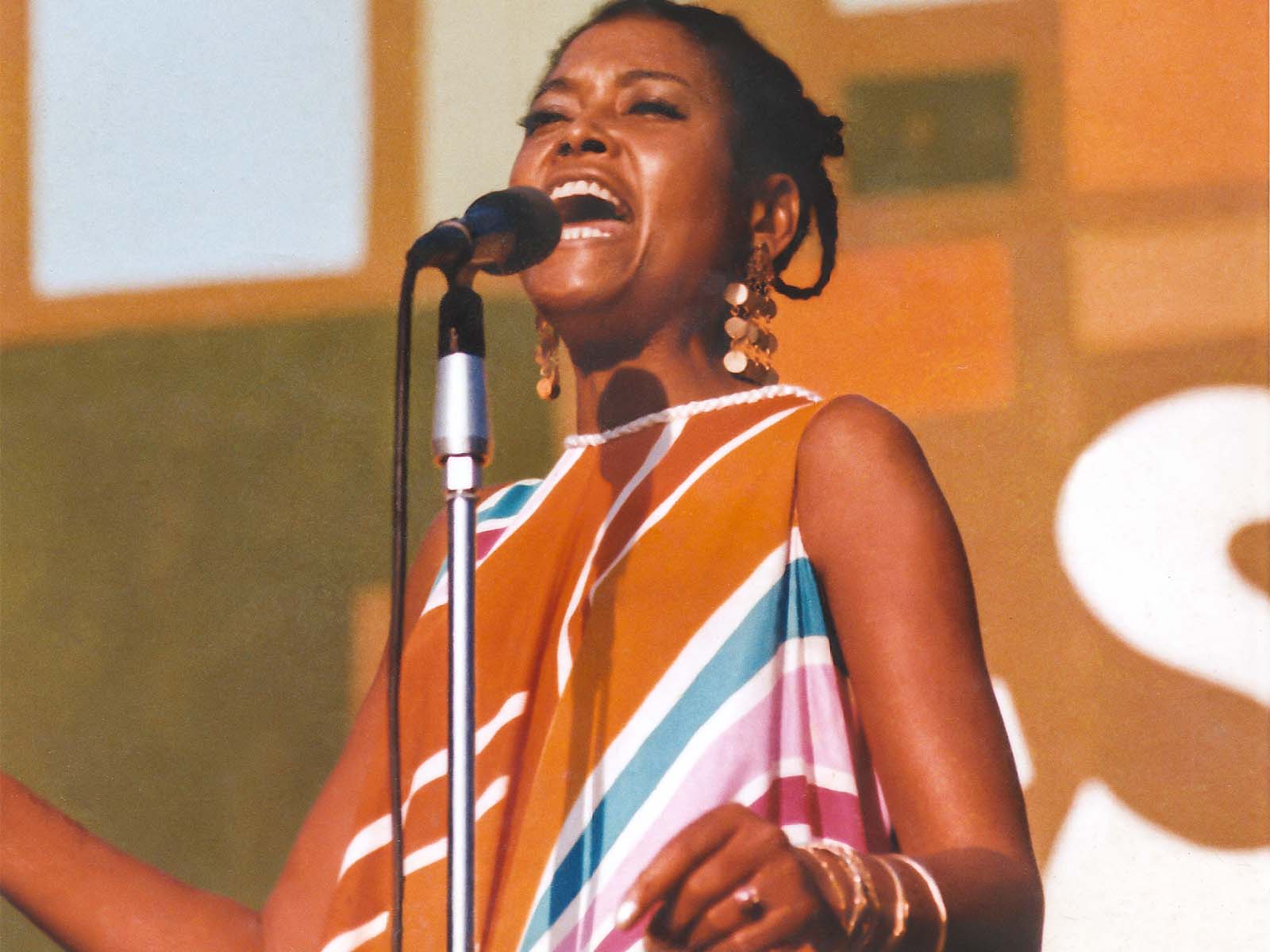
PEARSON: No, but maybe we’ll see. Maybe they might’ve changed things over there.
HULLFISH: This might do it. In addition to all of the musical choices, there are some really great sound bites. I was thinking when I heard the sound bite, “Black people don’t know about psychiatrists and therapists, but we know Mahalia Jackson,” do you just put that in a special bin that says, “We have to use this quote.”?
PEARSON: Yeah, I thought, “There’s the perfect segue to Mahalia Jackson.” Al Sharpton was really an impressive soundbite machine. Obviously, the guy has been a media figure for many years and he’s got his own show on CNN. So, he was just a machine.
Pretty much every sentence was a usable soundbite. It was amazing.
It was tough to get him. He’s very busy, and the day we interviewed him, he was running behind, of course. He came in with an assistant and seemed a little tense. He said, “All right, guys, I only have half an hour.” Usually, these interviews are about 90 minutes. The producer, Joseph [Patel], said, “Damn. How are we going to do this with only 30 minutes for Al Sharpton?” but pretty much every sentence was a usable soundbite. It was amazing. He was great.
HULLFISH: Some documentaries avoid see-and-say and there were places where you embraced it. When you were building this doc out and listening to sound bites, did you make a list of stuff that you wanted to research or to find? Were you thinking, “We need this from Harlem,” and, “We need this from the civil rights movement.”
PEARSON: Absolutely. We knew we were going to hit all these beats. It’s a concert film, but wedged into it, we realized eventually that we wanted to cram in the big beats of black cultural history and the history of the civil rights movement because, again, ’69 was a hugely transformative year where the nonviolent civil rights movement of Dr. Martin Luther King was ending. He’d been assassinated the year before, and in ’69 the black Panthers were really starting to take off. We knew we needed all of that stuff.
It’s funny because the last big late-sixties doc I worked on was a four-part limited series doc for Netflix called Bobby Kennedy for President, which was fantastic. It was a really great, fun project to work on directed by Dawn Porter. For a long time the working title for that film was 1968 because that film ends in ’68. There was so much crossover in terms of the archival footage, but because they are separate jobs separated by a couple of years we had to find the footage again. From now on, we’ve just got to save all this archival footage because we’re going to use it again eventually.
I literally got to the point where I’d have to say to the archivist—who was a different archivist than the person who had worked on the Bobby Kennedy show—”I remember there was a shot of Huey Newton getting punched out by a police officer. Can we find that again?” It was painful to have to re-find a lot of stuff, but we’d make a list and give it to her.
HULLFISH: I’m working on a documentary right now that takes place in 1936, and a lot of it is the CCC and WPA. I contacted a friend over at Ken Burns’ documentary company saying, “I know you guys have to have a ton of WPA and CCC footage. Help me out. I need all that stuff.”
PEARSON: Yeah, it is a nightmarish job. The poor archival researcher. It’s not an easy job.
HULLFISH: No, it’s not. To me, one of the longest seemingly unedited sections was Mahalia singing MLK’s favorite song after Jesse Jackson describes his assassination. Can you talk to me about the creative decisions about using an extended musical piece?
PEARSON: There are two major pivot points in the film. One is the Mahalia Jackson and Mavis Staples song because that is, of course, also the story of Martin Luther King’s assassination. There’s just something so insanely powerful about that whole song just the way that Mahalia Jackson builds herself up to this peak of almost heavy metal screaming at one point. Her mouth is open so wide, you could count her fillings in her molar. It is unedited. It’s crazy. It just blows your head off.
Then, there’s a literal passing of the torch to Mavis Staples where she hands Mavis the microphone, and then Mavis picks it up and continues the song. Actually Mavis starts it, it goes to Mahalia, but then she passes the mic back to Mavis and they duet for a little bit, but it’s a passing of the torch. That’s this transitional moment out of the old and into the new, out of the older civil rights movement represented by King into this new era represented by the Black Panthers and increasingly militant music. So, it was just a big moment and it’s also an amazing, incredible performance.
The other pivotal moment is the Apollo moon landing. You have this turn from the futuristic funk and Latin good time music of Sly and the Family Stone, Ray Barretto, and Mongo Santamaria to this very conscious turn into the more militant aspects of late sixties black music.
HULLFISH: Did you worry at all about cutting between aspect ratios?
PEARSON: Not really because we’re not really seeing the interviews that much. We played around with blowing it up a little bit, but it goes back to having it be an artifact and not trying to disguise the fact that it’s an artifact. It is immersive just by the nature of the power of the performances themselves. It was shot very well too.
There are great tight shots, but we wanted to keep the weird edges. Sometimes there’s weird rainbow stuff happening on the edges.
HULLFISH: I noticed that.
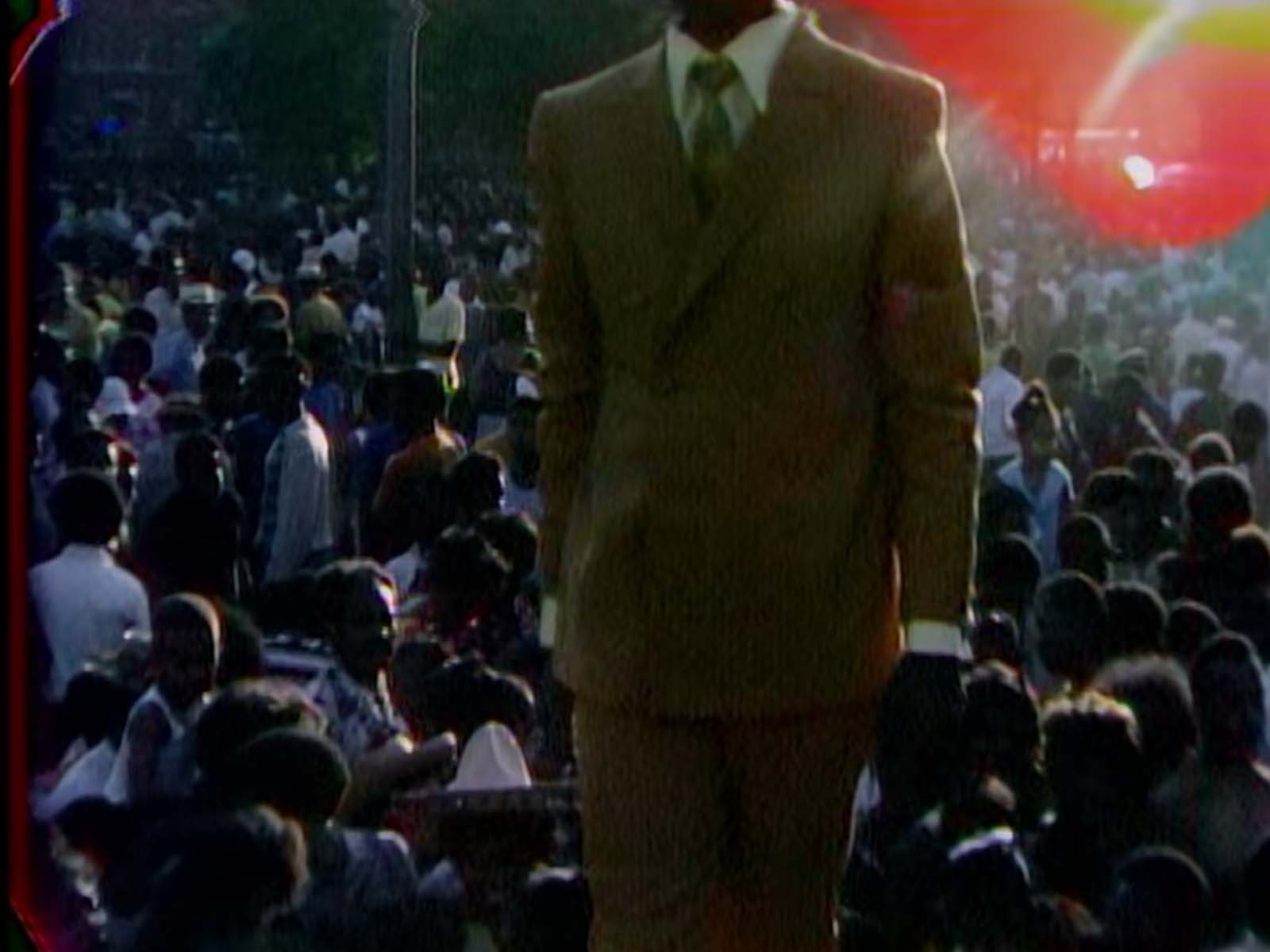
PEARSON: We liked that stuff. I don’t know if people know this —I don’t see it in much of the press —but people say, “The film quality is so cool.” It’s not film.
HULLFISH: [Laughs] I know it’s videotaped.
PEARSON: It’s videotape. They shot it live and it was a live line cut onto two-inch videotape reels, which was amazing. We had original reels and my producer found these two guys on Long Island and they digitized it. It had been digitized before—because like I said, there were two different directors who had tried to make this film in the last 10 or 15 years but just didn’t get it off the ground—but we had it freshly digitized, which was right.
That’s a cheat. I’m a cheater.
HULLFISH: One of my favorite cuts that I noticed and loved was when Ruffin is singing “My Girl” and he points up and it cuts to a guy in a tree. You had to have created that.
PEARSON: That’s a cheat. I’m a cheater.
HULLFISH: I love that. It looks like it’s real.
PEARSON: I had to do it because that’s also the lyric at that moment. He sings, “Just like a bird in any tree,” and then he waves up high saying, “How you doing brother?” I think he actually was looking at a guy in a tree. There was no reverse shot of the guy in the tree, but luckily there were two shots of two people in a tree and I used both of them.
HULLFISH: Yeah, that was a pretty brilliant cut. I can’t believe there wasn’t film footage beyond the video footage. That’s amazing.
PEARSON: No, that’s the only thing. Again, it speaks to the erasure of black history and the fact that this incredible festival got zero news coverage that we know of. The only news coverage we found was the day of the Apollo landing. Somebody working for Walter Cronkite said, “Well, I have an idea. Let’s send our guy into the middle of this concert I heard about in Harlem.”
HULLFISH: Let’s send this uptight white dude down.
PEARSON: Exactly.
HULLFISH: The reason why I thought that there was another video crew or that someone else was out there was exactly the reason you talked about with the weird edging. In the Sly and the Family Stone section, it looked like every once in a while it would cut and the edges of the video were a slightly different width.
PEARSON: I think some of them are just degraded, but there was no film. It’s just these two-inch reels.
HULLFISH: Interesting. In the transition out of the end of Sly’s “Everyday People” there’s a fade transition at the end of it.
PEARSON: I believe that is this wonderful moment with one of the attendees that they found, this guy named Darryl Lewis, who is just incredible. He’s the guy who’s bald and has this huge smile who tells this hilarious story of waiting for Sly to get on the stage saying, “You don’t know when they’re going to appear. You don’t know if he’s actually going to show up.” He was amazing. He’s just a regular guy, but he’s a huge music fan and very knowledgeable. During David Ruffin, he says, “Me and my friends were suit and tie guys. We knew all the moves. We were huge Motown fans.” Then, it comes back full circle at the end of Sly’s set and he says, “After we saw Sly and the Family Stone, we were no longer suit and tie guys. The change was in effect,” and then it cuts to black.
Then, it goes from Sly into the Latin section, and the Latin section ends with Ray Barretto doing that great little riff where he says, “There’s a part of me in everyone. I’ve got Indian blood, black blood, white blood. I’m all mixed up, and we gotta get it together down here on earth instead of up on the moon.” Then, that cuts to black and then it fades up on the archival footage of the Apollo landing.
HULLFISH: How did the choice of the final music in the last interview feel correct for your theme and for the emotion that you were trying to achieve?
PEARSON: The last moment where we see Musa Jackson? He just summed up everything we were trying to say with this film, which is themes of black erasure because you don’t know about these things that have occurred in black history. Black people don’t even know about them.
For him, it meant a lot to have seen this footage because he thought it might’ve just been a false memory. He was very young at the time and he just wasn’t sure it had happened. To actually see it again took him back to this place where he got so emotional. He cries, and anyone crying is documentary gold, of course, but it just seemed like the perfect ending for the film and summed up everything when he said, “Thank you. Thank you. Now I know I’m not crazy. It was just so beautiful,” which sums it up.
It just seemed like the perfect ending for the film and summed up everything.
The final music ends with Nina reading the poem by one of the last poets, a very angry militant, but also a hopeful and uplifting poem which was very cutting edge and avant-garde. We realized we couldn’t just go out there, so then it cuts to that scene that’s like the false ending where you see Nina perform and it suddenly cuts to black like the end of The Sopranos where you think, “What happened? Did the film break?” That is representing this disappearing.
Then, there’s a montage of those beautiful still photographs of the empty park right after the concert with trash on the ground, but we realized we can’t leave people with a downer. So, to get people back up, Questlove very much wanted to end with “Take You Higher” by Sly and the Family Stone because it’s an incredible performance where he gets everybody to do a call and response and everyone’s pumping their fists in the air. It’s just fantastic. Again, that represented the theme of the film.
Marcus Garvey Park – the site of Harlem’s 1969 Cultural Festival.
Questlove put it beautifully when he introduced a live screening of the film in Harlem at Mount Morris Park—which was mind blowing and is a whole other story—but he said he wanted to make a film that was more about black joy and less about black pain. There’s a lot of stuff that represents black pain out there that obviously we all need to see and absorb, but he wanted to swing the other way a little bit. There’s plenty of black pain in the film, but in smaller amounts than you would think. He wanted to end it with joy.
HULLFISH: One of the things that I loved seeing as an editor was how close to the beginning of the credits your name appeared.
PEARSON: That was nice. Yes.
HULLFISH: It’s Questlove, and then you. Not quite that soon, but it was close.
PEARSON: Well, the three of us, myself, Joseph Patel, and Questlove were really the triumvirate who were working on this film during the pandemic. So, we were lucky in that we shot about half or maybe two thirds of the interviews before the lockdown. There aren’t that many interviews in the film, maybe 12. Then, I was able to work with that all summer long in my basement, which actually was great because I love working at home. I’m happy to do it for the rest of my life on every single job if possible.
HULLFISH: I’ll talk to your agent about that.
PEARSON: I am so much more productive. As you probably know: a happy editor is a good editor.
HULLFISH: Yeah, I do a lot of that myself and the thing for me is that I have moments where I just know that I’m not inspired and I shouldn’t be editing, and there are other times when I’m thinking, “Oh man. I know it’s seven o’clock at night, but I have a great idea. I could go until two o’clock in the morning.” Why not edit that way and not edit from two o’clock in the afternoon to six?
PEARSON: Totally. I’m also cutting out and probably spending two hours every day commuting in and out in New York City. So, it was great. I was able to stay in the zone for a lot longer, work at odd hours, go get some exercise in the middle of the day, and work at night. There are even times where I would lose sleep about a problem with the film that I was cutting, and if I can’t sleep, ultimately, I try to read for a while or I try to walk around, but then I thought, “To hell with it. I’m going to go down and work.” So, I’d work from two to four in the morning.
I was able to stay in the zone for a lot longer, work at odd hours, go get some exercise in the middle of the day, and work at night.
HULLFISH: How did you figure out the order of the songs? Was Questlove choosing music? Did you have a setlist that you were pulling songs off of?
PEARSON: We had note cards before the lockdown, the standard colored note cards and the push pins. I’ve been trying to move to a digital version of that, so I was using Google Sticky Notes, which was super primitive.
HULLFISH: Final Draft has something like that now.
PEARSON: There was something else I started using on this other job that’s exactly like that, which is very easy to use. So, we would always have a board where we tried to move things around and realizing “That didn’t work. Let’s try this first and then go to that.” We played with structure quite a lot. Questlove was very into talking about structure, figuring out how it flowed best, and finding what he wanted to really represent in terms of this arc of the music and the culture. So, we would play with the note cards a lot.
HULLFISH: Love it. Thank you so much for your time tonight. I really appreciate it. It was great talking to a fellow editor as usual.
PEARSON: Great. Thanks so much.

